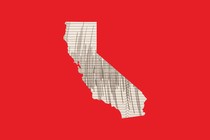No One Really Knows How Interest Rates Work
8 min read
Arguably the single most important question for the U.S. economy in 2024 is whether and when the Federal Reserve will cut interest rates. With inflation still hovering just above the Fed’s 2 percent target, the central bank faces a dilemma: Lower rates too quickly, and inflation could take off again; keep them high for too long, and the public could suffer unnecessarily. The decision could even affect the outcome of the presidential election. Wall Street and the White House are anxiously awaiting the Fed’s next move.
Given all that, you might reasonably expect the relationship between interest rates and inflation to be thoroughly understood by the economics establishment. Not so. Over the past two years, reality has looked nothing like the theories found in economics textbooks. The uncomfortable truth is that no one really knows how interest rates work or even whether they work at all—not the experts who study them, the investors who track them, or the officials who set them.
The belief that raising interest rates is the cure for inflation has long been an article of faith. In the early 1980s, when inflation reached nearly 15 percent, then–Fed Chair Paul Volcker famously raised rates to record levels, triggering a major recession. Unemployment reached nearly 11 percent in 1982 and stayed high for years. But inflation stabilized, and Volcker went down in history as the hero who wrecked the economy to save it.
How exactly did Volcker accomplish the job? The conventional view is that raising rates sets off a chain reaction throughout the economy. First, the Fed increases what is known as the federal funds rate—the interest that banks must pay to borrow money from one another, which in turn forces them to charge more for consumer loans. Those higher rates ripple throughout the economy, making it more expensive for people to buy homes and cars, companies to make investments, and developers to finance new construction.
Gradually, everyone starts spending less money. Then, faced with less demand from consumers and less access to capital, companies begin laying off workers. At this point, a vicious cycle takes hold. Laid-off workers pull back even more on spending, which means more layoffs and, in turn, even less spending, until the economy falls into recession. With less money chasing the same amount of goods, prices finally come under control. The dread beast inflation is defeated.
This is the canonical story of what happened in the 1980s. And so, when inflation hit three years ago, and the Fed reached for the one tool in its toolbox, nearly every expert predicted an ’80s-style economic meltdown. A Bloomberg Economics model forecast a 100 percent chance of a recession by October 2023, and the Fed itself projected hundreds of thousands of job losses. The experts were wrong. Over the course of 2023, the economy boomed, unemployment remained historically low, and consumers kept spending. Despite all that, inflation fell anyway, from a peak of 9 percent in June 2022 to about 3 percent by the end of 2023.
We have a bit of a mystery on our hands. The Fed raised rates, and inflation fell—but the other steps in the chain reaction never happened. Did higher interest rates cause inflation to decline, or was that a coincidence? Multiple studies have concluded that the inflation spike was mostly caused by pandemic-shutdown ripple effects. Perhaps the subsequent decline was just a natural consequence of things returning to normal.
Some experts believe that the orthodox theory holds up. “You have to ask, ‘What’s the counterfactual?’” Lawrence Summers, the former Treasury secretary and informal dean of mainstream American economics, told me. In Summers’s view, without the Fed’s actions, unemployment would have been even lower, wages would have gone up even faster, spending would have been even higher, and inflation would have gone up even further.
Still, if interest rates helped tame inflation, you’d expect to see their impact show up somewhere. Yet even in construction—the sector typically hit earliest and hardest when rates go up—employment has kept rising. “You can tell a lot of stories about the role interest rates played, but that’s really all they are at this point: stories,” Skanda Amarnath, the executive director of Employ America, a think tank focused on monetary policy, told me. “There’s no smoking gun in the data.”
When I said there was a conventional view of how interest rates work, that wasn’t the whole story. There are actually two conventional views. One is the chain-reaction theory. The other is about expectations.
According to Econ 101, if workers expect prices to rise tomorrow, they will demand higher wages today. That will in turn raise costs for businesses, which pass those on to consumers in the form of higher prices. Economists refer to this feedback loop as the “wage-price spiral.” In the 1970s, prices rose so fast for so long that eventually people came to expect them to keep rising and adjusted their behavior accordingly. Inflation became a self-fulfilling prophecy.
The expectations theory provides an alternative account of how Volcker tamed inflation in the ’80s: By raising interest rates to record levels, he sent the message that the Fed would do whatever it took to defeat inflation. Only then did Americans finally accept that price growth would slow down.
Some experts believe that inflation fell so painlessly in 2023 because the Fed never let expectations get out of control in the first place. The central bank began raising rates early on and signaled clearly that it would stop at nothing to bring prices down. Convinced that a recession was around the corner, employers stopped raising wages and hiring as quickly, and consumers slowed down their spending, which allowed the economy to glide smoothly toward a more stable equilibrium.
This is the kind of economic theory that sounds very plausible until you try to apply it to actual human behavior. How, exactly, is the latest federal-funds-rate number supposed to penetrate the consciousness of the American consumer? Normal people don’t pay much attention to the minutes of Federal Reserve meetings. You might suppose that the Fed’s general vibe trickles down through the media to the man on the street via a drawn-out game of economic telephone, but the evidence suggests otherwise. The average American has depressingly little idea of what’s going on with the national economy. (In one recent poll, 56 percent of respondents said that we’re in a recession. We are not.) And even if people are aware of rate hikes, that doesn’t mean they will respond in the way the textbooks predict. A survey recently conducted by a trio of economists found that 57 percent of Americans believe that raising interest rates actually causes inflation to rise. This isn’t totally irrational—more on that later—but it’s the exact opposite of how Econ 101 says people react to higher rates.
Even those who endorse the expectations theory acknowledge that they can’t explain how it works. “Do we really think an individual person in some town somewhere is really saying, ‘Oh, the Fed went to a 5.5 federal funds rate, so I won’t ask for more wages’?” Adam Posen, a former central banker who literally co-wrote the book on the role expectations play in lowering inflation, told me. “Economic theory says yes: Through some magical awareness, people do behave that way. I’ve always been a little skeptical of that.
If the benefits of high interest rates are mysterious and uncertain, the costs are fairly clear. Many low-income households, which may rely on borrowing to cover routine expenses, are struggling. Several big clean-energy projects have been canceled, partly because of higher financing costs. Rising rates will also force the U.S. government to pay a projected $870 billion to service the national debt this year, more than it spends on Medicaid or national defense.
Most troubling of all, today’s high interest rates may paradoxically be prolonging the inflation problem. Most of the gap between the current rate of inflation (just above 3 percent) and the Fed’s 2 percent target comes from a single category: housing. In theory, higher interest rates should temper housing prices by making mortgages more expensive and thus reducing demand. In reality, many homeowners are staying put to preserve the cheap mortgages they secured when rates were lower. This “lock-in effect” has restricted the supply of available homes, exacerbating a decades-long housing shortage and putting upward pressure on prices. Even more worrying in the long run, higher borrowing costs mean less investment in building new homes. When it comes to housing, Mark Zandi, the chief economist at Moody’s Analytics, told me, “the Fed’s main tool for lowering inflation is actually doing the opposite.”
The Fed sees things differently. At its most recent meeting, earlier this month, the central bank decided to keep rates at current levels, citing a trio of hotter-than-expected inflation reports at the beginning of the year that left the trajectory of prices unclear. “We remain highly attentive to inflation risks,” Federal Reserve Chair Jerome Powell said during a press conference announcing the Fed’s decision. (Notably, the latest inflation report, released the same day as the Fed’s announcement, showed dramatic signs of improvement.)
Powell’s worry is this: Inflation is still too high for reasons no one fully understands. If people like Lawrence Summers are right that interest rates are keeping the economy from running too hot, then easing up on them could allow inflation to get out of control all over again. That would be the ultimate nightmare scenario for the central bank, which is terrified of losing the inflation-fighting credibility that Paul Volcker worked so hard, and caused so much damage, to build.
For the central bank, in other words, interest rates are like chemotherapy. They might have horrible side effects. They might not even work. But they’re a lot better than taking your chances with the cancer of inflation. “The lesson of the 1970s is that once inflation really takes off, getting it down is really hard and expensive,” Summers told me. “So the Fed has every reason to be extra cautious.”
Although a wait-and-see approach sounds reasonable, no one knows how long it takes for rate increases to work their way through the economy’s bloodstream. As two leading scholars of the history of monetary policy wrote last year, “If policymakers keep tightening until inflation falls as much as they want, they will likely have gone too far—because the effects of tight policy will continue for many months after they stop raising rates.” Translation: Wait too long to cut rates, and you might throw people out of work unnecessarily. You might even trigger a recession.
The orthodox view of interest rates has a utopian quality to it: Inflation—one of the single greatest threats to the social and economic order—can be controlled with the equivalent of a push of a button. The events of the past two years have called that notion into question. This time, we were lucky, avoiding both an inflationary spiral and a recession. Next time we may not be. Fortunately, there are many other ideas for how to fight inflation. They include taxing the consumption of the rich to restrain spending, boosting immigration to alleviate worker shortages, cracking down on price-fixing, and keeping strategic reserves of important goods in case of a supply crunch. These approaches are all far messier and more politically fraught than waiting for the Fed to work its magic behind closed doors. But the next time inflation rolls around, we may need them.



